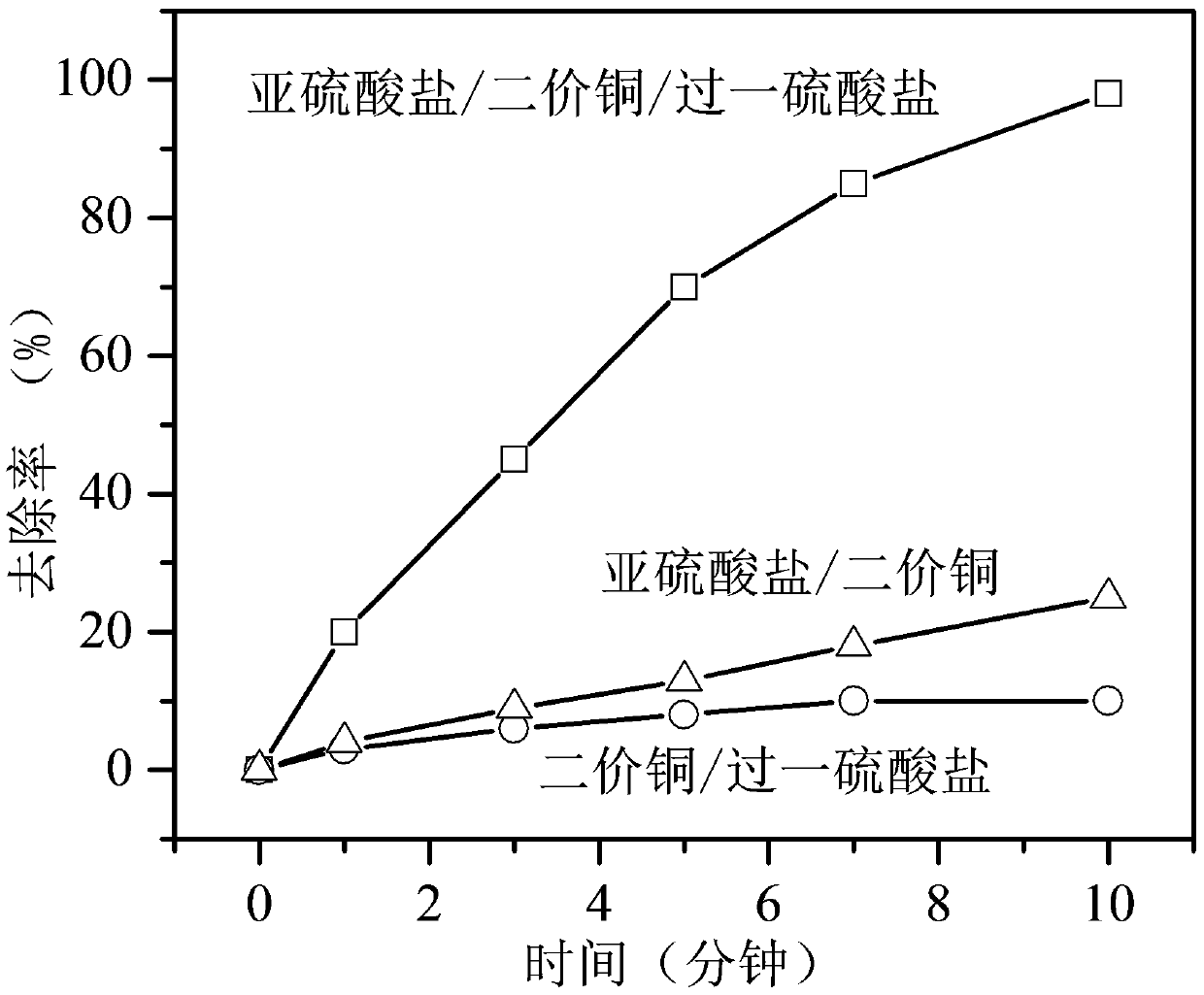Method of using sulfite enhanced divalent copper to catalyze persulfate oxidation to degrade organic pollutants
A technology of persulfate oxidation and organic pollutants, applied in water pollutants, chemical instruments and methods, oxidized water/sewage treatment, etc., can solve the problem of low degradation efficiency of organic pollutants, low sulfate radical yield, startup Long response time and other problems, to achieve the effect of shortening start-up time, wide application range and fast speed
- Summary
- Abstract
- Description
- Claims
- Application Information
AI Technical Summary
Problems solved by technology
Method used
Image
Examples
Embodiment example 1
[0020] (1) Use perchloric acid and potassium hydroxide to adjust the pH value of domestic sewage containing sulfamethoxazole to 7;
[0021] (2) Add 10 µM copper nitrate to the water sample to be treated, then add a certain amount of potassium persulfate solution and sodium sulfite solution, wherein the ratio of divalent copper to sodium sulfite and potassium persulfate is 1:50:500, and stir well Mix and take samples at different sampling points, and the effective degradation of sulfamethoxazole can be achieved after 10 minutes.
[0022] In this implementation case, a sulfite-enhanced divalent copper-catalyzed persulfate oxidation degradation method for organic pollutants has a degradative effect on sulfamethoxazole in water as shown in the attached figure 1 shown. From attached figure 1 It can be seen that the divalent copper / peroxymonosulfate system can only degrade 10% of sulfamethoxazole in 10 minutes; the sulfite / divalent copper system has only 20% removal rate of sulfam...
Embodiment example 2
[0024] In specific implementation case 2, sulfamethoxazole in step (1) was replaced with carbamazepine, estrone, nonylphenol, aspirin, chloramphenicol, penicillin, diclofenac, naproxen, ibuprofen, triclosan, Any organic pollutant in ciprofloxacin, ofloxacin, norfloxacin, sulfamethazine, sulfamethazine, other steps are exactly the same as the implementation case 1.
[0025] In this implementation case 2, the method of sulfite-enhanced divalent copper catalyzed oxidation and degradation of organic pollutants by persulfate has a degradative effect on other pollutants in the water body as shown in the appendix figure 2 As shown, it can be seen from the figure that the method of sulfite-enhanced divalent copper-catalyzed oxidation of persulfate to degrade organic pollutants has a good removal effect on a variety of emerging micro-pollutants.
specific Embodiment example 3
[0027] Specific implementation example 3 adjusts the pH value of the water sample to be treated in step (1) to any one of 6, 8, 9, 10, and 11, and other steps are exactly the same as implementation example 1.
PUM
 Login to View More
Login to View More Abstract
Description
Claims
Application Information
 Login to View More
Login to View More - R&D
- Intellectual Property
- Life Sciences
- Materials
- Tech Scout
- Unparalleled Data Quality
- Higher Quality Content
- 60% Fewer Hallucinations
Browse by: Latest US Patents, China's latest patents, Technical Efficacy Thesaurus, Application Domain, Technology Topic, Popular Technical Reports.
© 2025 PatSnap. All rights reserved.Legal|Privacy policy|Modern Slavery Act Transparency Statement|Sitemap|About US| Contact US: help@patsnap.com


